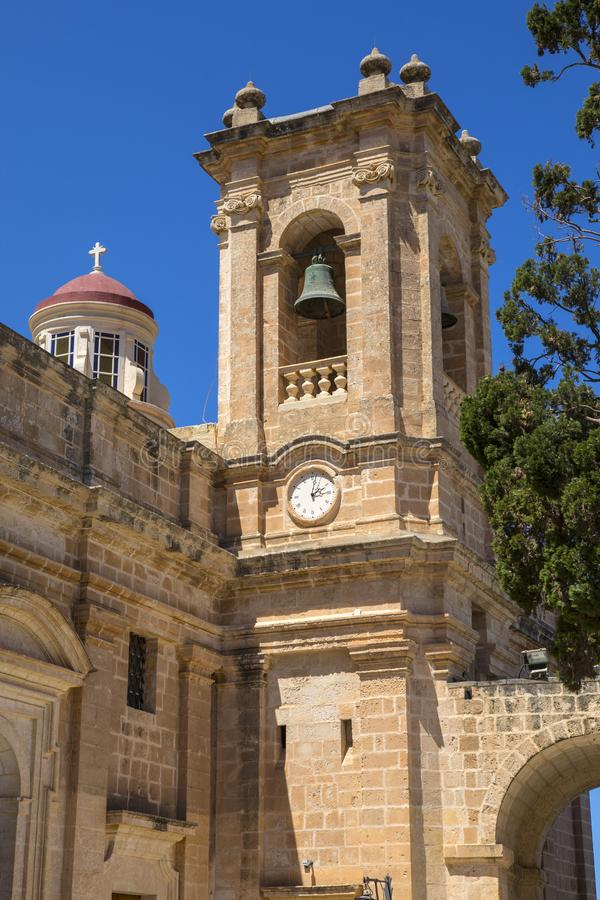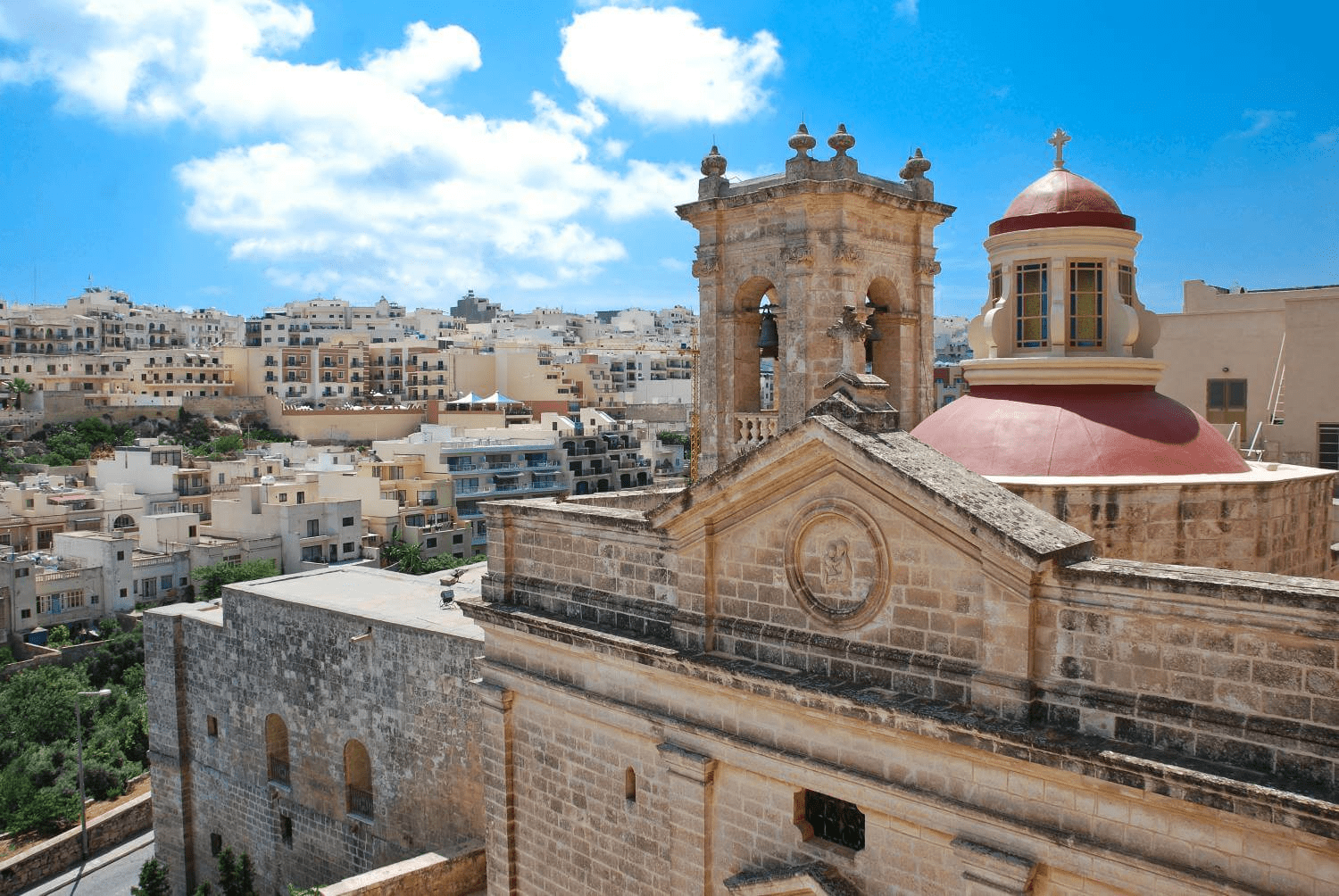The building on top of the Sanctuary of Our Lady of Mellieha
The door on the left leads to the sacristy. The cavern was excavated wound 1610 by Mario de Vasi, a Sicilian wine merchant who contributed as well for the decoration of the grotto’s vault and the erection of the statue of Our Lady of the Grotto. The sacristy contains an impressive collection of ex-voti, gifts and pledges, all of which demonstrate the great devotion the Maltese have towards Our Lady.
The Monumental Arch was built in 1719, so as to commemorate the favours obtained from Our Lady of Mellieha after a long period of draught. The inscription on the Arch reads: “In thee have fathers hoped. they have hoped and thou host delivered them”.
The Crypt of Our Lady of Mellieha was originally one of the many natural caves found around the northern part of the island. According to an old tradition, the Byzantine style fresco, depicting the Vergin Mary holding Christ on her right arm, was painted by St. Luke, when he was shipwrecked on the island together with St.Paul. Recent studies indicate that the fresco is an Early Medieval 13th century painting.
The ancient part of the Sanctuary, as it stands today, dates back to the late 16th century. Since then, due to the popularity of the place and the ever increasing population of Mellieha the chapel’s internal structure was modified and extended several times, the major works being done in 1716-19, 1815 and 1845-47. In 1844 the Rector and later Parish Priest of Mellieha Dun Pawl Le Brun, the Sanctuary regained its status of a parish church and in 1899 the miraculous painting was coronated by Archbishop Pietru Pace.




In the chapel’s belfry one finds tow bells, two of which date back to the 8th century (1712 and 1733). The largest bell was bought from Carlo Moreni of Firenze, Italy in 1857 at the price of 1,063 skudi.
The Sanctuary’s clock was fabricated by Mikelang Sapiano from Imqabba in 1875. All the expenses were paid by the British Government.
From under the roofed verandah, a classic example of 17th Century Renaissance architecture, one can enjoy a picturesque view of the Valley of Our Lady, Mellieha Bay, Comino and Gozo. The rooms facing the chapel were originally contracted in the 18th century to host exhausted pilgrims.
Behind the iron grating, there lies a old statue of St. Anne, probably made by a devotee of Our Lady of Mellieha. In the chapel’s facade there is as well a statue of St. Paul, which was constructed later in the 19th century.
Everyday
08.00 - 12.00, 16.00 - 18.00